- Why Pruning is Important for Your Garden
- Tools You’ll Need for Pruning
- 1. Pruning Shears
- 2. Loppers
- 3. Pruning Saw
- 4. Hedge Trimmers
- 5. Gloves
- 6. Safety Gear
- Autumn Pruning: When and What to Prune
- When to Prune
- What to Prune
- Spring Pruning: When and What to Prune
- Timing
- What to Prune
- Pruning Techniques
- Pruning Techniques for Different Plant Types
- 1. Deciduous Trees and Shrubs
- 2. Evergreen Trees and Shrubs
- 3. Perennials and Herbaceous Plants
- 4. Fruit Trees
- 5. Climbing Plants
- 6. Roses
- Common Mistakes to Avoid When Pruning
- Pruning Tips for a Healthy and Beautiful Garden
- 1. Understand the Purpose of Pruning
- 2. Choose the Right Tools
- 3. Timing is Everything
- 4. Understand Pruning Techniques
- 5. Prune Properly
- 6. Consider Safety Measures
- 7. Dispose of Pruned Material Properly
- 8. Seek Professional Help if Needed
- 9. Regular Maintenance is Key
- Hiring a Professional Pruner vs. DIY Pruning
- Professional Pruner
- DIY Pruning
- Questions and Answers:
- When is the best time to prune my garden?
- Is it necessary to prune my garden every year?
- What tools do I need to prune my garden?
- How much should I prune my plants?
- What are the benefits of autumn pruning?
- Can I prune my garden in the spring?
- How do I know if I am pruning correctly?
- Videos: You’re (Probably) Killing Your Fruit Trees
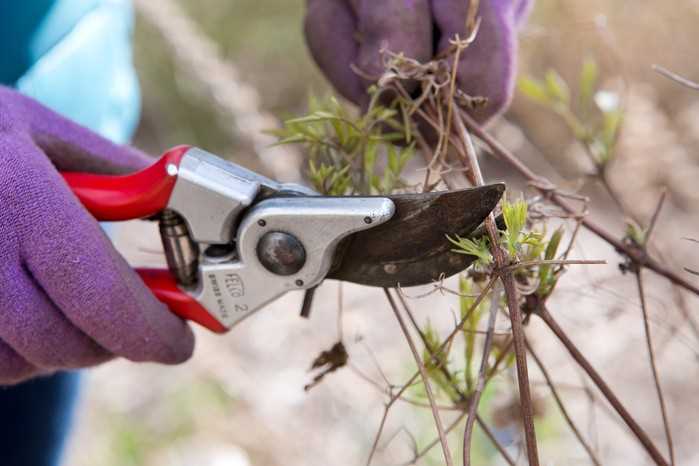
Pruning is an essential task for any gardener, whether you’re a beginner or have been tending to your garden for years. It involves the removal of dead or overgrown branches, stems, and leaves from plants to promote healthy growth and improve their appearance. Autumn and spring are the two main seasons for pruning, each with its own set of guidelines and benefits.
Autumn pruning is typically done after the growing season has ended and the leaves have fallen. This is the ideal time to remove dead or diseased branches, as well as any unwanted growth. By pruning in autumn, you can help prevent the spread of diseases and pests that may be present in the garden. It also allows for better air circulation and light penetration, which is essential for the overall health of the plant.
Spring pruning, on the other hand, is usually done before the plant starts producing new growth. This is the time to shape and rejuvenate the plant, as well as remove any crossed or tangled branches. Pruning in spring can help promote a more compact and vigorous growth, as well as enhance the plant’s flowering and fruiting potential. It also allows for better control of the plant’s size and shape.
When pruning, it’s important to use the proper tools and techniques to minimize the risk of damage to the plant. Always use clean, sharp tools to make clean cuts and avoid tearing the plant’s tissues. Start by removing any dead, broken, or diseased branches from the plant, making sure to cut just outside the branch collar. Then, selectively prune any overgrown or unwanted branches, making sure to maintain the plant’s natural form.
In conclusion, pruning is a necessary task for every gardener. By following the proper guidelines for autumn and spring pruning, you can help promote the health and vitality of your plants, as well as improve the overall appearance of your garden. Remember to always use the appropriate tools and techniques, and to prune with care and attention to detail. Happy pruning!
Why Pruning is Important for Your Garden
Pruning is an essential gardening practice that involves removing specific parts of a plant, such as branches, buds, or roots, to improve its overall health and appearance. Whether you have a small backyard garden or a sprawling landscape, pruning plays a crucial role in maintaining the vitality and aesthetics of your plants.
Promotes plant growth: Pruning stimulates plant growth by removing dead or diseased wood, allowing new and healthy growth to flourish. Trimming also helps redirect the plant’s energy towards producing more flowers or fruits, resulting in a more bountiful and visually appealing garden.
Controls plant size and shape: Regular pruning helps control the size and shape of plants, preventing them from becoming overgrown and unsightly. By removing unwanted branches or stems, you can maintain a compact and well-proportioned appearance that complements your garden design.
Enhances air circulation and sunlight penetration: Trimming dense foliage improves air circulation within the plant, reducing the risk of fungal diseases. It also allows more sunlight to reach the lower parts of the plant, enabling better photosynthesis and promoting overall plant health.
Reduces the risk of pests and diseases: Pruning can help eradicate insect-infested or diseased parts of a plant, preventing the spread of pests and diseases to other healthy plants in your garden. Regular pruning also makes it easier to monitor and control any potential issues before they become more serious.
Improves flowering and fruiting: By selectively removing old or spent blooms, pruning can encourage a plant to produce more flowers or fruit. This can lead to a more vibrant and productive garden, providing you with a beautiful display of colors or a bountiful harvest.
Shapes plants for aesthetic appeal: Pruning allows you to shape plants according to your personal preferences or to fit within a specific garden style. With careful pruning, you can create eye-catching topiaries, elegant hedges, or symmetrical forms that enhance the overall beauty of your garden.
Prevents damage and hazards: Overgrown branches or stems can pose a risk to your property and the safety of people nearby, especially during severe weather conditions. Regular pruning helps eliminate weak or damaged branches, reducing the risk of falling debris and potential accidents.
In conclusion, pruning is a vital practice for maintaining the health, appearance, and functionality of your garden. By understanding the importance of pruning and implementing proper techniques, you can ensure your plants thrive and create a beautiful, well-maintained garden space.
Tools You’ll Need for Pruning
Pruning is an important task for maintaining the health and appearance of your garden. To successfully prune your plants, you’ll need to have the right tools at your disposal. Here are some essential tools you’ll need for pruning:
1. Pruning Shears
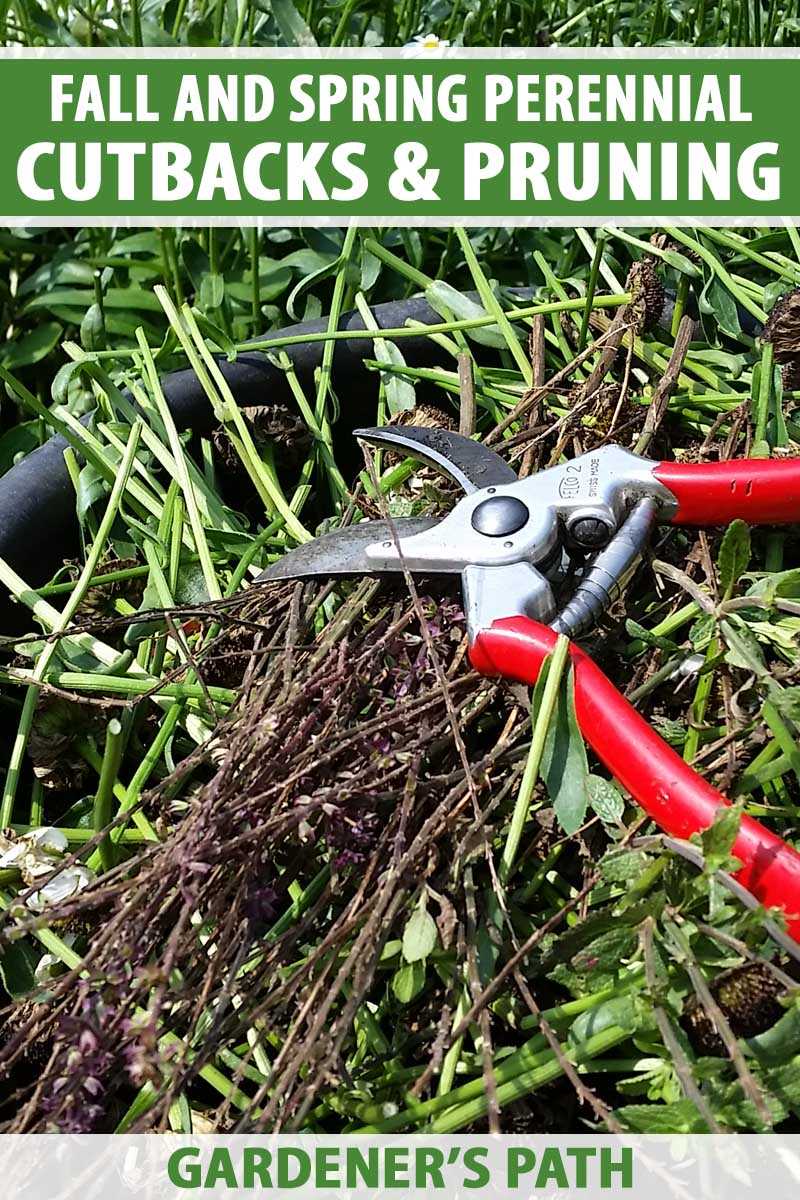

Pruning shears, also known as secateurs, are one of the most commonly used tools for pruning. These handheld tools are designed to cut through small branches and twigs with ease. Look for pruning shears with a bypass cutting action, as they provide cleaner cuts and are less likely to damage the plant.
2. Loppers
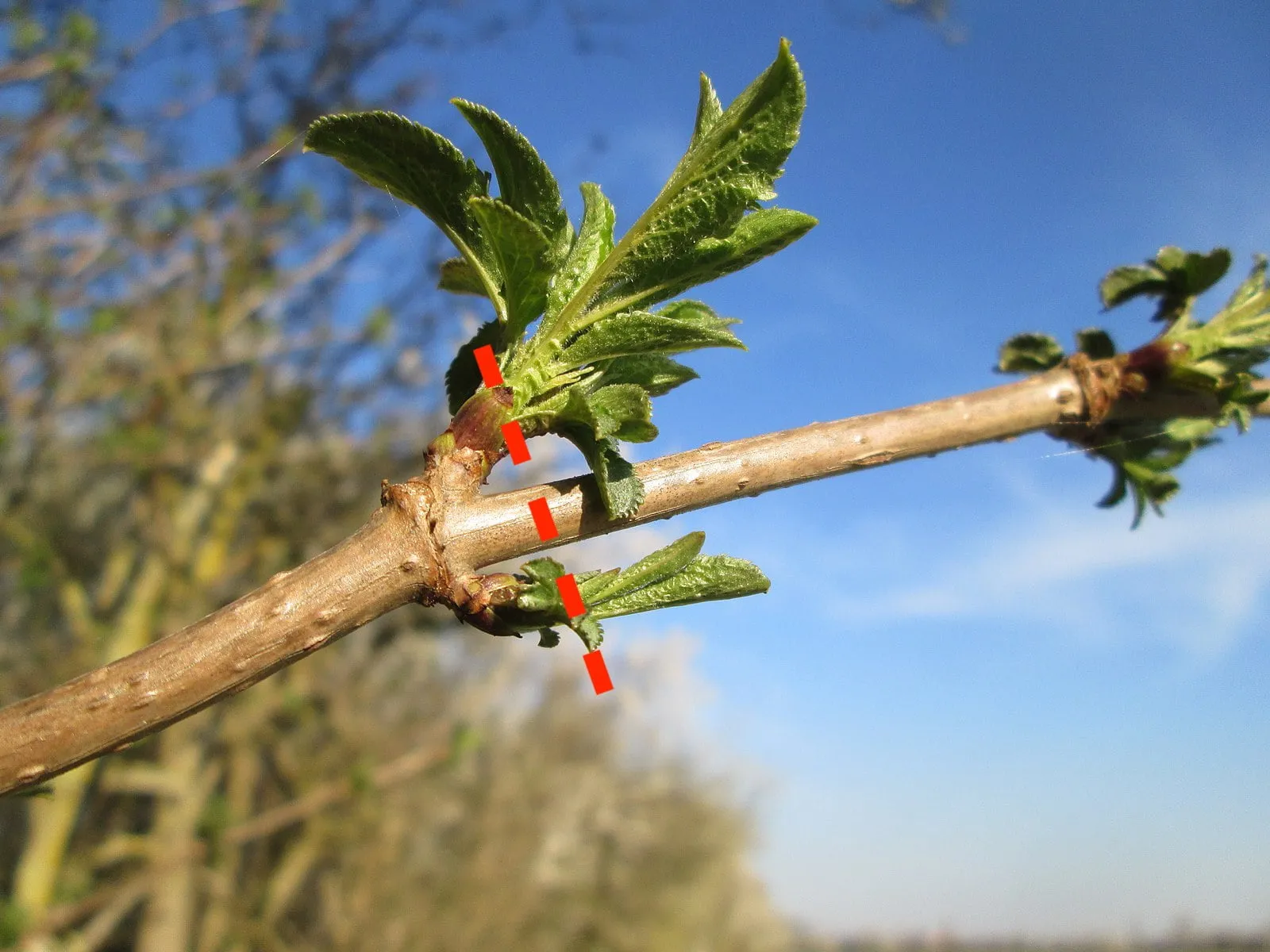

Loppers are larger pruning tools with long handles and a scissor-like cutting action. They are ideal for cutting through thicker branches that are too large for pruning shears. Loppers come in various sizes, so choose one that suits your needs and the size of your plants.
3. Pruning Saw
A pruning saw is a handy tool for cutting through thicker branches. It has a toothed blade that allows for faster and more efficient cutting. When choosing a pruning saw, look for one with a comfortable handle and a sharp blade.
4. Hedge Trimmers
If you have hedges or shrubs in your garden, a pair of hedge trimmers is a must-have tool. These electric or manual tools make it easy to shape and trim your hedges to keep them looking neat and tidy. Electric hedge trimmers are more powerful and easier to use, but manual trimmers are a good option for smaller hedges.
5. Gloves
Pruning can be a thorny task, so it’s important to protect your hands with a pair of gardening gloves. Look for gloves that are durable and fit well to ensure maximum protection. Gloves with reinforced fingertips can also provide extra protection against thorns and sharp edges.
6. Safety Gear
Depending on the size of your pruning tasks, you may need additional safety gear such as safety glasses or goggles to protect your eyes from flying debris. If you’re using electric tools, earplugs or earmuffs can help protect your hearing. Always prioritize safety when pruning.
Having the right tools for pruning will make the task easier and more efficient. Invest in high-quality tools that are suited to your specific pruning needs, and remember to clean and maintain them regularly to ensure their longevity.
Autumn Pruning: When and What to Prune
Autumn is a critical time for pruning in the garden. Pruning during this season helps to shape and maintain the health of plants before winter arrives.
When to Prune
The timing for pruning in autumn can vary depending on the specific plants in your garden. As a general rule, it is best to wait until after the plant has finished flowering and before the first frost. This allows the plant to recover and prepare for winter dormancy.
Pruning too early in autumn can stimulate new growth, which may not have enough time to harden off before the cold weather sets in. However, pruning too late can leave the plant vulnerable to winter damage.
What to Prune
In autumn, the focus of pruning is to remove dead, damaged, or diseased branches and to shape the plant for the coming season. Here are some common plants and their pruning requirements in autumn:
- Flowering shrubs: Prune after flowering to encourage new growth and promote better flowering next year.
- Fruit trees: Remove any dead or diseased branches, as well as any branches that are crossing or touching each other. This will improve air circulation and reduce the risk of fungal diseases.
- Roses: Prune hybrid teas and floribundas by cutting back about one-third of the plant’s height. Remove any dead or crossing branches. Climbing roses should be lightly pruned to remove any dead or unwanted growth.
- Perennials: Cut back the foliage of herbaceous perennials after they have finished flowering. This will help to prevent the spread of diseases and make the garden look tidier during the winter months.
It is important to use sharp and clean pruning tools to minimize damage to the plant and reduce the risk of transmitting diseases.
Remember, every plant is different, so it is always a good idea to consult specific pruning guidelines for each plant in your garden. Proper autumn pruning will help to ensure the health and beauty of your garden throughout the year.
Spring Pruning: When and What to Prune
Spring is an important time for pruning as it allows you to shape and maintain the health of your garden plants. Knowing when and what to prune can make a significant difference in the overall appearance and vitality of your garden. Here are some tips:
Timing
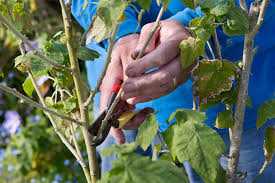

The timing for spring pruning can vary depending on the type of plant and your local climate. In general, it is best to wait until after the threat of frost has passed and plants have started to show signs of new growth. For most plants, early spring, just before the growth season begins, is the optimal time for pruning.
What to Prune
When it comes to spring pruning, it is important to focus on removing dead, damaged, or diseased wood. This helps improve airflow and sunlight penetration, reducing the risk of pests and diseases. Additionally, pruning can help shape and encourage new growth.
Here are some key plants to prune in spring:
- Roses: Prune roses in early spring before new growth starts. Remove dead or weak wood, and shape the plant to promote an open center.
- Fruit Trees: Prune fruit trees in late winter or early spring before bud break. Remove crossed or crowded branches, as well as any dead or diseased wood.
- Perennials: Cut back dead foliage on herbaceous perennials in early spring to make way for new growth.
- Shrubs: Spring is a good time to rejuvenate overgrown shrubs. Remove any dead or damaged wood and shape the shrub as desired.
- Grasses: Cut back deciduous grasses in early spring before new growth appears. Remove dead foliage to allow room for fresh growth.
Pruning Techniques
When pruning in spring, it is important to use the proper techniques to minimize damage and promote healthy growth.
Here are some general tips:
- Use clean and sharp pruners or shears to make clean cuts.
- Always prune at a 45-degree angle, just above a bud or a lateral branch.
- Remove any suckers or water sprouts that may have formed at the base of the plant.
- Keep in mind the natural shape and growth habit of the plant when pruning.
- Refer to specific pruning guides for each plant type for more detailed instructions.
| Plant | Best Time to Prune |
|---|---|
| Roses | Early spring before new growth starts |
| Fruit Trees | Late winter or early spring before bud break |
| Perennials | Early spring |
| Shrubs | Spring |
| Grasses | Early spring before new growth appears |
Pruning Techniques for Different Plant Types
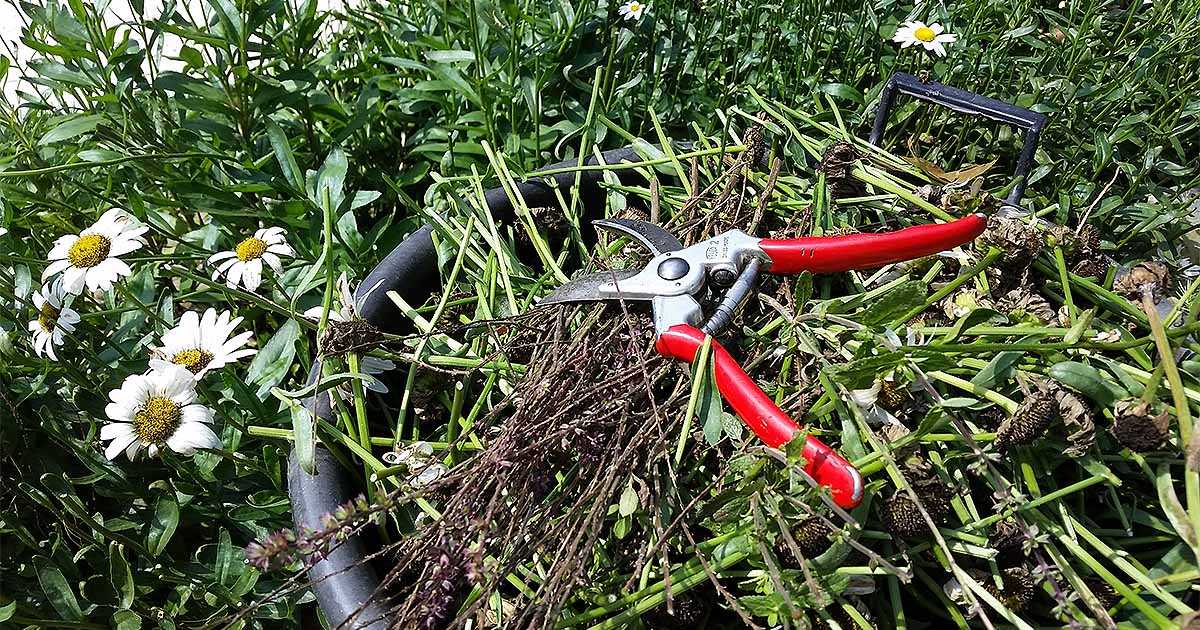

1. Deciduous Trees and Shrubs
Pruning deciduous trees and shrubs is essential for maintaining their health and aesthetic appeal. Here are some techniques to consider:
- Thinning: Remove any crowded, weak, or diseased branches to improve airflow and light penetration. This also helps the plant to maintain its natural shape.
- Heading back: Cut back long or overgrown branches to a lateral bud or branch to encourage new growth and maintain the plant’s size and shape.
- Renewal pruning: Every few years, remove old, unproductive wood by cutting it back to the ground. This stimulates the growth of young, vigorous branches.
2. Evergreen Trees and Shrubs
Pruning evergreen trees and shrubs helps promote their overall health and enhance their shape. Follow these techniques for optimal results:
- Tip pruning: By removing the tips of branches, you can stimulate bushier growth and maintain a desirable shape.
- Thinning: Remove any dead, damaged, or crossed branches to enhance air circulation and sunlight penetration. This also helps maintain the plant’s natural form.
- Shearing: Use hedge clippers or shears to create a formal shape for evergreen shrubs. Regular shearing will help maintain a neat appearance.
3. Perennials and Herbaceous Plants
Pruning perennials and herbaceous plants promotes flowering, controls their size, and prevents disease. The following techniques are commonly used:
- Deadheading: Remove faded flowers to encourage new bloom production and extend the flowering season.
- Cutting back: In late fall or early spring, cut back the entire plant to 2-3 inches above the ground to rejuvenate growth and remove any dead or diseased foliage.
- Division: Some perennials benefit from division every few years to prevent overcrowding and maintain vigor. Dig up the plant and separate the clumps, replanting them in new locations.
4. Fruit Trees
Pruning fruit trees is essential for optimizing fruit production and maintaining tree health. Consider the following techniques when pruning fruit trees:
- Thinning: Remove excess fruit when they are still small to promote better fruit size and prevent branches from breaking under the weight of too many fruits.
- Structural pruning: Train young fruit trees by pruning to create a strong and balanced framework. This involves removing any branches that compete with the main scaffold branches.
- Renewal pruning: Periodically remove older branches to stimulate the growth of new fruitful wood.
5. Climbing Plants
Pruning climbing plants helps control growth, prevents them from becoming invasive, and enhances flowering. Use the following techniques when pruning climbing plants:
- Training: Provide support and guide the plant’s growth along trellises or structures to achieve the desired shape and direction.
- Pruning after flowering: Depending on the type of climbing plant, prune after flowering to remove any dead or overgrown wood and promote new growth.
- Thinning: Remove any weak or overcrowded stems to improve air circulation and prevent disease.
6. Roses
Pruning roses is crucial for maintaining their health, promoting flowering, and controlling their size. Here are some techniques to follow when pruning roses:
- Deadheading: Remove faded blooms to encourage repeat blooming and prevent the formation of rose hips.
- Thinning: Remove any weak, damaged, or crossing branches to improve air circulation and prevent disease.
- Pruning back: In late winter or early spring, prune back roses to a healthy outward-facing bud to encourage vigorous growth and maintain a desirable shape.
| Tip | Explanation |
|---|---|
| Use sharp tools | Sharp tools make clean cuts, minimizing damage and promoting quicker healing. |
| Disinfect tools | Clean and disinfect tools between plants to prevent the spread of diseases. |
| Prune in the right season | Follow the appropriate pruning time for each plant type to avoid harming the plant. |
| Step back frequently | Regularly step back and evaluate the overall shape and appearance of the plant as you prune. |
Remember that different plants have varying pruning requirements. Always research and understand the specific needs and best practices for each plant type before pruning. Regular pruning, when done correctly, will help maintain healthy and attractive plants throughout the year.
Common Mistakes to Avoid When Pruning
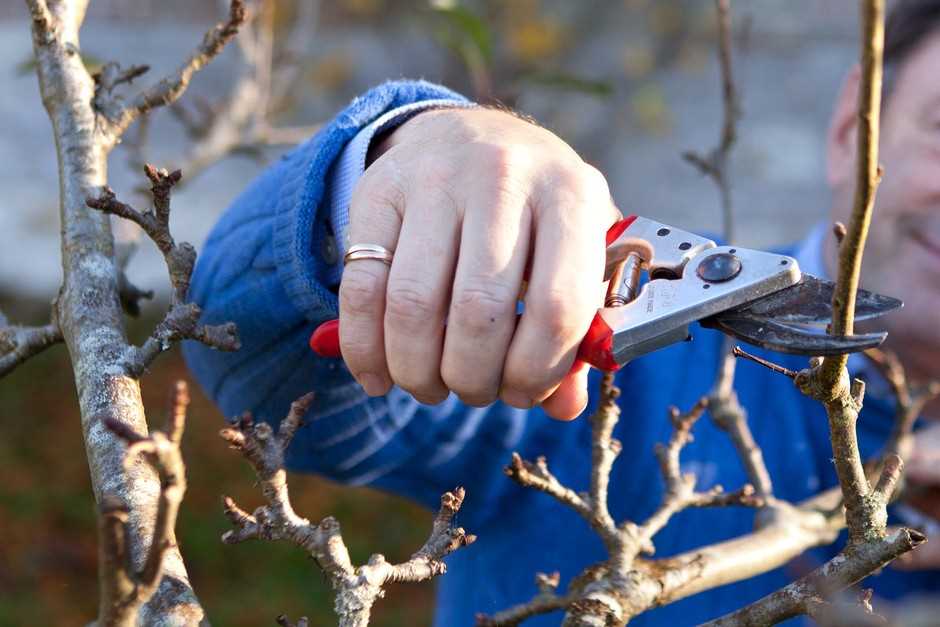

- Pruning at the wrong time: One of the most common mistakes made when pruning is doing it at the wrong time of year. Different plants have different pruning needs, so it’s essential to research and understand when is the best time to prune each specific plant.
- Over-pruning: Over-pruning can weaken the plant and inhibit its growth. It’s essential to strike a balance between removing enough foliage to promote healthy growth and leaving enough to aid in photosynthesis and energy production.
- Using blunt or dull tools: Using blunt or dull tools can damage the plant and make clean cuts difficult. It’s vital to regularly sharpen your pruning tools to ensure they are sharp enough to make clean and smooth cuts.
- Pruning too much in one session: In some cases, it may be necessary to prune heavily, but in general, it’s best to avoid removing more than one-third of a plant’s foliage in a single session. Over-pruning can stress the plant and affect its overall health.
- Ignoring proper pruning techniques: Pruning should be done using proper techniques to ensure the plant’s health and appearance. Incorrect cuts can lead to disease, pests, and overall damage to the plant. It’s crucial to learn and follow proper pruning techniques for different plants.
- Pruning during extreme weather conditions: Pruning during extreme weather conditions, such as excessively hot or cold temperatures, can stress the plant and inhibit its recovery. It’s best to prune plants during more moderate weather conditions for optimal results.
- Failure to clean and sanitize tools: Using dirty and unsanitized tools can spread diseases and pests to healthy plants. It’s important to clean and sanitize your pruning tools regularly to prevent the spread of potentially harmful organisms.
- Improper disposal of pruned material: Properly disposing of pruned material is crucial to prevent the spread of disease and pests. Burn or bag and dispose of pruned material to prevent reinfestation or contamination.
- Not knowing the plant’s natural growth habit: Understanding a plant’s natural growth habit is essential to make informed pruning decisions. Pruning in a way that goes against a plant’s natural growth habit can result in misshapen or unhealthy growth.
- Ignoring safety precautions: Pruning can be a hazardous task, especially when dealing with large or tall plants. Ignoring safety precautions can result in serious injuries. Always wear protective gear, such as gloves, goggles, and appropriate footwear, when pruning.
Pruning Tips for a Healthy and Beautiful Garden
1. Understand the Purpose of Pruning
Pruning is an essential gardening practice that helps promote the health and appearance of plants. By removing dead or diseased branches, you can prevent the spread of diseases and improve the overall shape of your plants. Pruning also stimulates new growth, leading to stronger and more productive plants.
2. Choose the Right Tools
Invest in a good set of pruning tools to make the job easier and more efficient. Essential tools include pruning shears for small branches, loppers for thicker branches, and a pruning saw for larger limbs. Make sure your tools are sharp and clean to make clean cuts and reduce the risk of infecting your plants.
3. Timing is Everything
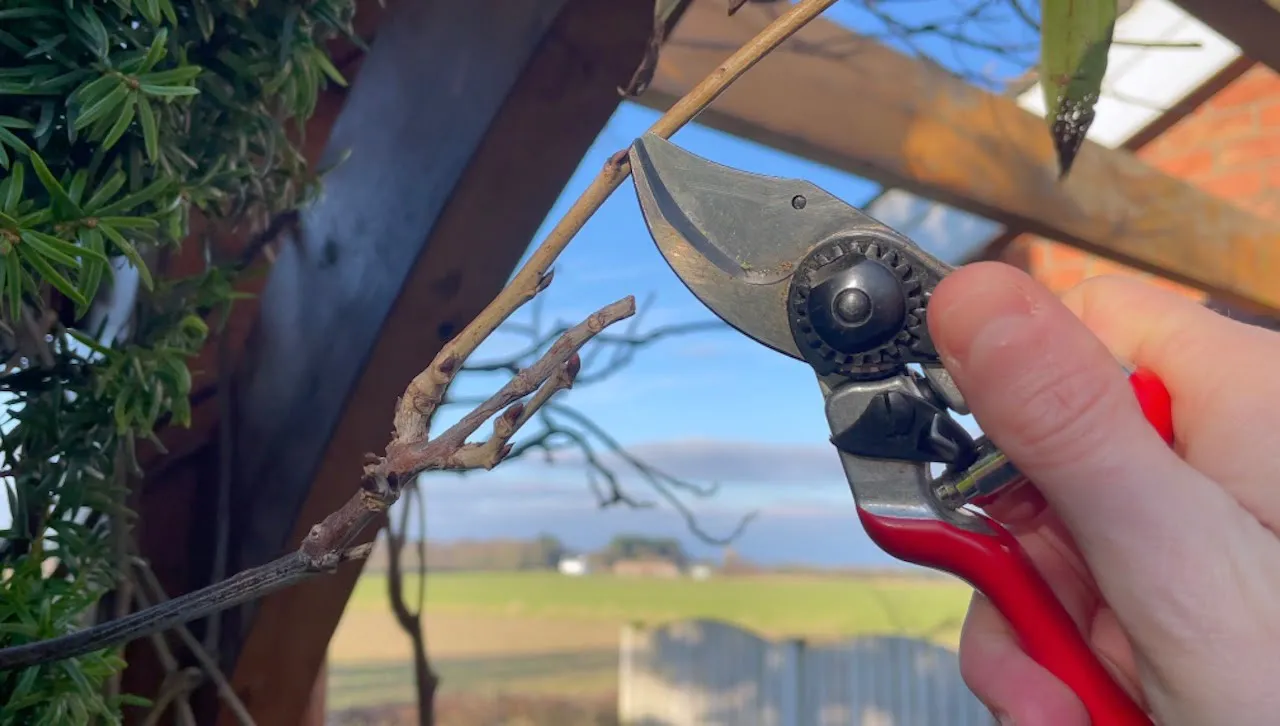

Timing is crucial when it comes to pruning. The best time to prune depends on the type of plant you are working with. Generally, it is best to prune deciduous trees and shrubs during the dormant season in late winter or early spring. However, some plants may require pruning immediately after flowering or during specific seasons to achieve the desired results.
4. Understand Pruning Techniques
To ensure the best results, it is important to understand different pruning techniques. Some common techniques include:
- Thinning: Removing selected branches to improve air circulation and reduce overcrowding.
- Heading back: Cutting branches back to a lateral bud or branch to encourage new growth.
- Renewal pruning: Removing older, unproductive wood to stimulate new growth.
5. Prune Properly
When pruning, make clean cuts just above a bud or lateral branch. Avoid leaving stubs, as they can attract pests and diseases. Additionally, be mindful of the plant’s natural shape and growth habit to ensure a balanced and aesthetically pleasing result.
6. Consider Safety Measures
Pruning can be physically demanding and potentially dangerous. Always wear protective gear, such as gloves and goggles, to protect yourself from thorns, debris, and flying wood chips. If you need to climb a ladder, make sure it is stable and secure.
7. Dispose of Pruned Material Properly
After pruning, properly dispose of the pruned material to prevent the spread of diseases or pests. Burn or dispose of diseased branches, and consider composting healthy trimmings to enrich your garden soil.
8. Seek Professional Help if Needed
If you are unsure or uncomfortable with pruning, it is always best to seek professional help. A certified arborist or horticulturist can provide expert advice and ensure your plants are pruned correctly.
9. Regular Maintenance is Key
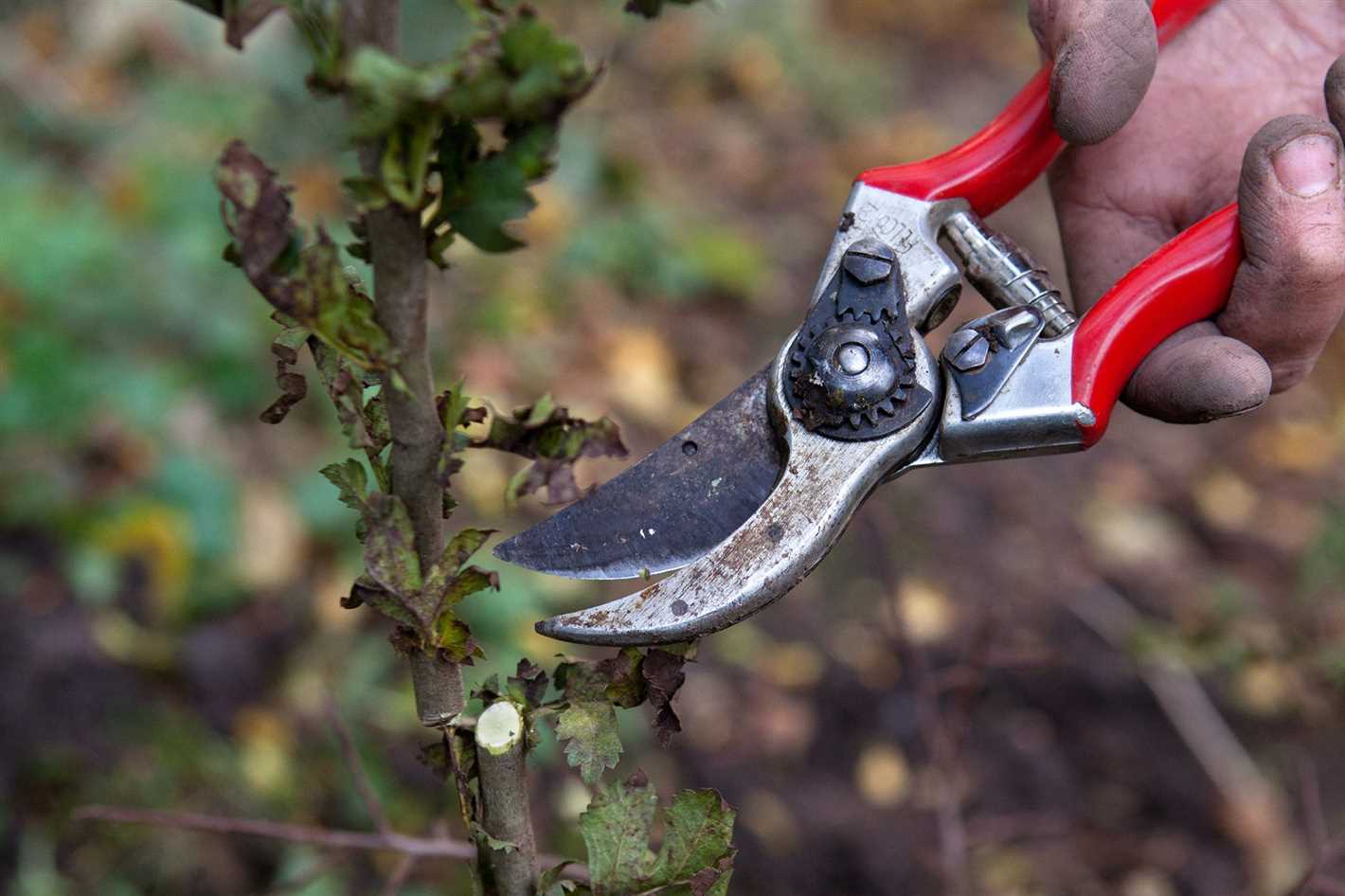

Regular pruning is a part of good garden maintenance. Make it a habit to inspect your plants regularly and prune as needed throughout the year. By staying on top of pruning tasks, you can maintain a healthy and beautiful garden all year round.
Remember, pruning is an art that requires knowledge and practice. With these tips, you can confidently prune your garden and enjoy the benefits of well-maintained plants.
Hiring a Professional Pruner vs. DIY Pruning
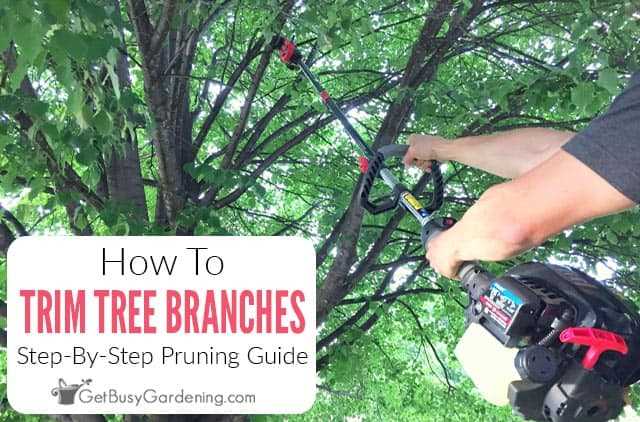

When it comes to garden pruning, you have the option to hire a professional pruner or do it yourself. Both options have their pros and cons, and it’s important to consider them before making a decision.
Professional Pruner
Hiring a professional pruner has several advantages:
- Expertise: A professional pruner is trained and experienced in pruning techniques. They know how to correctly prune different types of plants, ensuring optimal growth and health.
- Efficiency: Professionals have the necessary tools and equipment to prune efficiently. They can complete the job quickly and effectively.
- Safety: Pruning can be dangerous, especially when dealing with large trees or hard-to-reach branches. Professionals have the skills and safety equipment to handle these situations safely.
- Knowledge: In addition to pruning, professional pruners have a wealth of knowledge about plant care. They can provide advice and guidance on maintaining the health and appearance of your garden.
DIY Pruning
On the other hand, there are benefits to pruning your garden yourself:
- Cost: Hiring a professional pruner can be expensive, especially for larger gardens. Doing it yourself can save you money.
- Learning experience: Pruning your garden yourself allows you to learn about the different plants and their specific pruning needs. It can be a rewarding and educational experience.
- Control: When you prune your garden yourself, you have full control over the process. You can choose what to prune and how much to prune, based on your preferences.
- Flexibility: Doing it yourself allows you to prune your garden whenever you have time. You’re not dependent on a professional’s schedule.
Ultimately, the decision between hiring a professional pruner and doing it yourself depends on your individual circumstances and preferences. If you have a large garden or don’t feel comfortable pruning, hiring a professional may be the best choice. However, if you enjoy gardening and have the time and knowledge to prune your plants properly, DIY pruning can be a fulfilling and cost-effective option.
Questions and Answers:
When is the best time to prune my garden?
The best time to prune your garden depends on the type of plants you have. For most plants, it is recommended to do autumn pruning in late winter or early spring, before the new growth begins. However, there are some exceptions, so it’s always best to research the specific needs of your plants.
Is it necessary to prune my garden every year?
While it is not necessary to prune your garden every year, regular pruning can benefit your plants in many ways. Pruning promotes healthy growth, prevents overcrowding, and can improve the overall appearance of your garden. However, it’s important to follow proper pruning techniques and not over-prune, as this can harm your plants.
What tools do I need to prune my garden?
There are several tools that are commonly used for garden pruning. These include pruning shears, loppers, and pruning saws. Pruning shears are best for small branches up to ¾ inch in diameter, loppers are ideal for branches between ¾ and 1 ½ inches, and pruning saws are used for thicker branches. It’s important to choose the right tool for the job to ensure clean and efficient cuts.
How much should I prune my plants?
The amount of pruning required can vary depending on the type of plants you have. In general, it’s best to remove dead or damaged branches, as well as any branches that are crossing or rubbing against each other. It’s also important to maintain the natural shape of the plant and avoid excessive pruning, as this can cause stress to the plant.
What are the benefits of autumn pruning?
Autumn pruning offers several benefits for your garden. By pruning in late winter or early spring, before the new growth begins, you can stimulate healthy growth and flowering. It also helps to maintain the overall shape and structure of your plants, prevents diseases, and removes any dead or damaged branches.
Can I prune my garden in the spring?
While it is generally recommended to do autumn pruning, some gardeners prefer to prune in the spring. Spring pruning can be done after the plant has finished flowering, and can help shape the plant and promote new growth. However, it’s important to avoid pruning too late in the spring, as this can remove the flower buds and result in reduced flowering.
How do I know if I am pruning correctly?
Proper pruning techniques are important to ensure the health and growth of your plants. To know if you are pruning correctly, make sure to use sharp and clean tools, make clean and angled cuts, and avoid cutting too close to the trunk or main branch. Additionally, research the specific pruning needs of your plants and follow recommended guidelines for each type of plant.







